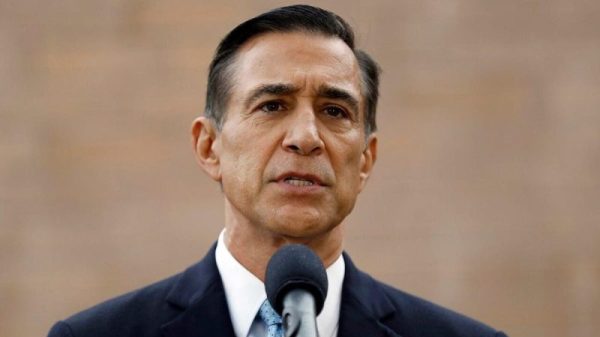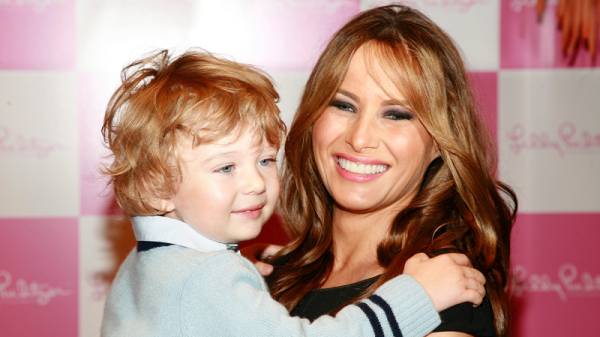Perhaps “birdbrained” isn’t such an insult after all –– crows, the ubiquitous urban bird, can vocally count up to four, the latest research has found.
Not only can the inquisitive creatures count, but they can match the number of calls they make when shown a numeral, according to a new study, led by a team of researchers with the University of Tübingen’s animal physiology lab in Germany.
The way the birds recognize and react to numbers is similar to a process we humans use, both to learn to count as toddlers and quickly recognize how many objects we’re looking at. The findings, published Thursday in the journal Science, deepen our growing understanding of crow intelligence.
“Humans do not have a monopoly on skills such as numerical thinking, abstraction, tool manufacture, and planning ahead,” said animal cognition expert Heather Williams via email. “No one should be surprised that crows are ‘smart.’” Williams, a professor of biology at Williams College in Massachusetts, was not involved in the study.
In the animal kingdom, counting isn’t limited to crows. Chimpanzees have been taught to count in numerical order and understand the value of numerals, much like young children. In attempting to woo mates, some male frogs count the number of calls from competing males to match or even one-up that number when it’s their turn to croak at a female. Scientists have even theorized that ants retrace their paths back to their colonies by counting their steps, though the method isn’t always accurate.
What this latest study showed is that crows, like young humans, can learn to associate numerals with values –– and count out loud accordingly.
Can crows count much like toddlers do?
The research was inspired by toddlers learning to count, said lead study author Diana Liao, a neurobiologist and senior researcher at the Tübingen lab. Toddlers use the words of numbers to tally the number of objects in front of them: If they see three toys in front of them, their counting could sound like “one, two, three” or “one, one, one.”
Maybe crows could do the same, Liao thought. She was inspired, too, by a June 2005 study on chickadees tailoring their alarm calls to a predator’s size. The larger a predator’s wingspan or body length, the fewer “dee” sounds the chickadees used in their alarm call, the study found. The opposite was true for smaller predators –– the songbirds would use more “dee” sounds if they encountered a smaller bird, which could be greater threats to chickadees since they are more agile, Liao said.
The authors of the chickadee study couldn’t confirm whether the small songbirds had control over the number of sounds they made or if the number of sounds were an involuntary response. But the possibility piqued Liao’s curiosity –– could crows, whose intelligence has been well-documented over decades of research, show control over their ability to produce a certain number of sounds, effectively “counting” like toddlers do?
The crows planned their number of caws
Liao and her colleagues trained three carrion crows, a European species closely related to the American crow, over more than 160 sessions. During the trainings, the birds had to learn associations between a series of visual and auditory cues from 1 to 4 and produce the corresponding number of caws. In the example researchers provided, a visual cue might look like a bright blue numeral, and its corresponding audio could be the half-second song of a drumroll.
The crows were expected to perform the same number of caws as the number represented by the cue –– three caws for the cue with the numeral 3 –– within 10 seconds of seeing and hearing the cue. When the birds had stopped counting and cawing, they would peck at an “enter” key on the touchscreen that presented their cues to confirm that they were done. If the birds had counted correctly, they’d receive a treat.
It appeared that as the cues continued, the crows took longer to react to each cue. Their reaction times grew as “more vocalizations were impending,” Liao wrote, suggesting that the crows planned the number of caws they were going to make before they opened their beaks.
The researchers could even tell how many calls the birds planned to make by the way their first call sounded –– subtle acoustic differences that showed that the crows knew how many numbers they were looking at and had synthesized the information.
“They understand abstract numbers … and then plan ahead as they match their behavior to match that number,” Williams said.
Even the mistakes the crows made were somewhat advanced: If the crows had cawed one too many times, stuttered over the same number or submitted their responses with their beak prematurely, Liao and her researchers could detect from the sound of the first call where they went wrong. These are the “same kinds of errors humans make,” Williams said.
We’re still learning how smart crows are
Birds and many other animals were previously thought to make only on-the-spot decisions based on stimuli in their immediate environments, a theory popularized by the 20th century animal behaviorist B.F. Skinner. But the latest research by Liao and her colleagues provides more evidence about crows’ ability to synthesize numbers to produce a sound and suggests that the skill is within their control.
The study team’s findings are highly specific but still significant –– they challenge the once common belief that all animals are merely stimulus-response machines, said Kevin McGowan, a researcher at the Cornell Lab of Ornithology in Ithaca, New York, who has spent more than two decades studying wild crows in their habitats. McGowan wasn’t involved in the study.
Crow intelligence has been studied for decades. Scientists have investigated New Caledonian crows creating their own compound tools to access food. The birds appear to establish rules, according to a November 2013 study coauthored by the University of Tübingen lab’s lead researcher, Andreas Nieder. Crow language has confounded scientists for decades, too, with its widely varying tones and expressions, McGowan said.
The study by Liao and her colleagues isn’t even the first to consider whether crows can count. That research began with Nicholas Thompson in 1968, animal cognition expert Irene Pepperberg noted. A research professor of psychological and brain sciences at Boston University, Pepperberg is best known for her work with an African grey parrot named Alex.
Thompson hypothesized that crows could count based on their caws, the duration and number of which the birds appeared to control in a given burst of sound. The crows’ counting abilities “seem to exceed the demands which survival makes for such abilities,” he wrote.
Another University of Tübingen study on crows’ counting abilities from September 2015 trained the birds to recognize groupings of dots and recorded the activity of neurons in the part of the crows’ brains that receives and makes sense of visual stimuli. The researchers found that the crows’ neurons “ignore the dots’ size, shape and arrangement and only extract their number,” the university said in a statement at the time.
“So, crows’ brains can represent different quantities, and crows can quickly learn to match Arabic numerals to those quantities –– something humans usually explicitly teach their children,” Williams said.







































